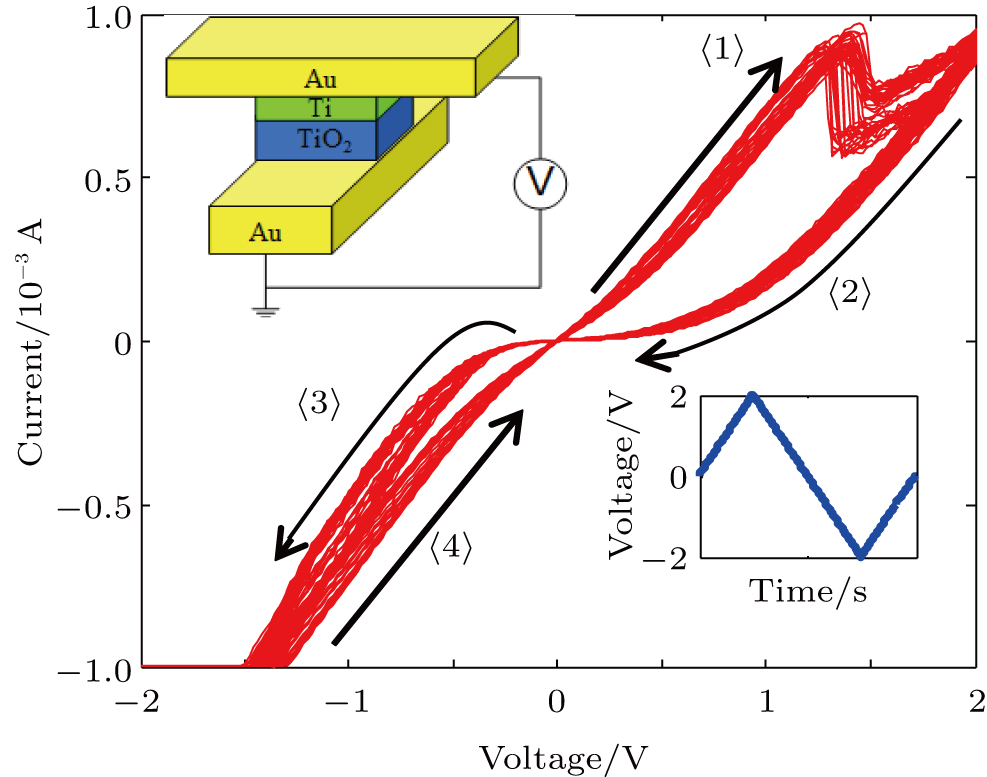A generalized model of TiOx-based memristive devices and its application for image processing
(color online) Reversible and nonvolatile switching of Au/Ti/TiO2/Au devices. The upper inset shows a schematic diagram of the crossbar devices with an Au bottom electrode (BE, 25 nm), a TiO2 thin film (40 nm), an adhesion Ti layer (5 nm) and an Au top electrode (TE, 35 nm). The red curves represent 50 experimental switching loops, which show a high level of repeatability. For each interval, the device stays in low resistance state (LRS) at 




